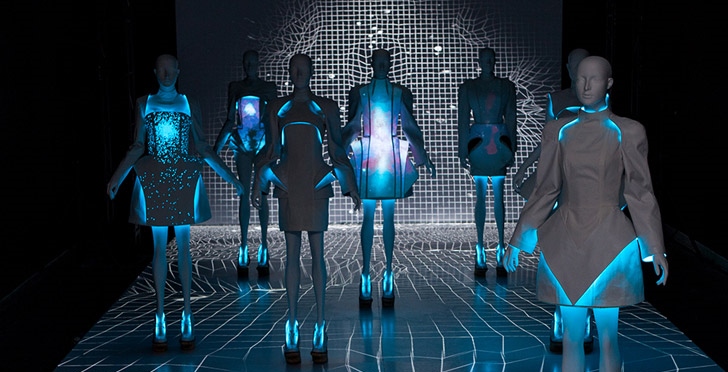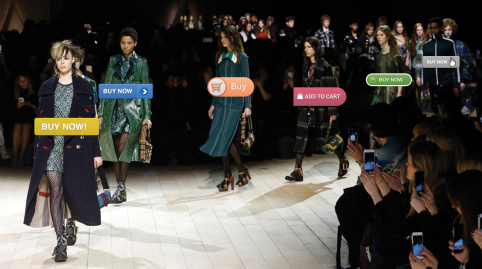5/5 (2) Watch the video here
This week, we had to make a video regarding Industry Disruption. We chose to focus on the real estate industry, as it is often overlooked when thinking about disruption, while there are endless technologies that could disrupt the industry. Real estate plays an important role in everyone’s live, as we all need a place to live. In order to learn more about the industry, we watched several videos and read different articles (which you can find in our reference list, if you are interested).
The real estate industry, as we currently know it, has been stable for a long time. While some processes have been digitized, the majority of the processes is still done offline (for example, visiting a house, meeting with a broker and signing a contract). However, digitization is about to have a huge impact on the retail industry. Currently, the top 50 largest real estate companies own 30% of the market, and rivalry among competitors is high, mainly due to low barriers to entry (if you wanted, you could be a broker tomorrow!). While there are substitutes, production is limited (it takes time, money and material to build a house. The bargaining power of both suppliers and buyers depends largely on their geographical location (for example, finding a house in Amsterdam is way harder than finding one in a small village).
Since classifieds moved online with Craigslist in 1995, real estate has started innovating by advertising online. However, since trust is very important when purchasing a house, it is hard to totally complete the process online. While they are more specialized portals nowadays, such as Zulia or Trillow, a large part of the transaction still takes place offline. However, the platforms offer value-added features, creating a new business model: the online real estate marketplace. These marketplaces are likely to substitute traditional brokers to a large degree and to automate the whole real estate purchase process. These online platforms eliminate the broker, and thus its commission. Online platforms offer numerous options, depending on the willingness to pay for both parties (for example, a buyer can choose between different subscription plans, and a seller can pay to have its listing appear on top).
But what about fraud? This is where the block chain comes in. While it is commonly known as the background technology for Bitcoin, the block chain offers many additional benefits which can be used to optimize the process of buying or renting a house online. The core advantage of block chain lies within its decentralized structure. The block chain is essentially a database that provides cheap, durable, time-stamped and transparent records of all transactions online. However, the security issues that arise, as well as the immense energy costs that go together with the transaction volume and the data storage have prevented the technology from being legalized in the majority of the countries.
We believe the real estate industry will change, based on the Newly Vulnerable Markets Theory. By changing the online real estate market place by implementing block chain, the three conditions for the theory are met: it will become attractive to attack, easy to enter and difficult to defend.
What do you think? How do you believe the retail industry will change?
REFERENCES:Brennan, M. (2016, September 15). 3 Real Estate Scams And How To Avoid Them. Retrieved from Forbes: http://www.forbes.com/sites/morganbre… Buterin, V. (2015, August 7). Vitalik Buterin: On Public and Private Blockchains. Retrieved from CoinDesk: http://www.coindesk.com/vitalik-buter… Deloitte. (2016, September 15). Blockchain: the next game changer in real estate? Retrieved from Deloitte: http://www2.deloitte.com/nl/nl/pages/… Ernst & Young. (2016, Semtember 15). Retail sector – Top 10 Opportunities . Retrieved from EY: http://www.ey.com/GL/en/Industries/Co… FranchiseHelp Holdings. (2016, September 15). Real Estate Franchise Industry in 2016 at a Glance. Retrieved from Franchise Help: https://www.franchisehelp.com/industr… IBM. (2016, September 15). What can blockchain do for you? Retrieved from IBM: http://www.ibm.com/blockchain/what_ca… Kinsman, S. (2015, December 10). I witnessed the largest bank heist in history ……. It would have been impossible with the loanbook published on the Blockchain. Retrieved from Medium: https://medium.com/@BambouClub/i-witn… Makkonen, J. (2016, September 15). Marketplace Academy . Retrieved from Marketplace Academy : https://www.sharetribe.com/academy/ho… Marino, B. (2015, December 2). Smart Contracts: The Next Big Blockchain Application. Retrieved from Cornell Tech: http://tech.cornell.edu/news/smart-co… Mougayar, W. (2016, September 15). The Blockchain is Perfect for Government Services, Here’s A Blueprint. Retrieved from Medium: https://extranewsfeed.com/the-blockch… Oparah, D. (2016, September 15). 3 Ways That The Blockchain Will Change The Real Estate Market. Retrieved from TechCrunch: https://techcrunch.com/2016/02/06/3-w… Reuters. (2016, September 15). This Country Is Testing the Tech Behind Bitcoin for Real Estate Transactions. Retrieved from Fortune: http://fortune.com/2016/06/16/sweden-… Schneider, J., Blostein, A., Lee, B., Kent, S., Groer, I., & Beardsley, E. (2016). Profiles in Innovation: Blockchain. New York: Goldman Sachs . The Economist. (2016, September 15). The promise of the Blockchain: The trust Machine. Retrieved from The Economist: http://www.economist.com/news/leaders… Torpey, K. (2016, September 15). Why 2016 May Be the Year of Real Estate on the Bitcoin Blockchain. Retrieved from Inside Bitcoins: http://insidebitcoins.com/news/why-20… Tracey, M. (2016, September 15). VR Headsets: Real Estate Game Changer? . Retrieved from RealtorMag: http://realtormag.realtor.org/technol… UK Government Chief Scientific Adviser . (2016). Distributed Ledger Technology: beyong block chain . London: OGL. Weiss, M. (2016, September 15). How Bitcoin Technology Could Make Home Buying Hassle-Free. Retrieved from Fast codesign: https://www.fastcodesign.com/3045710/…








